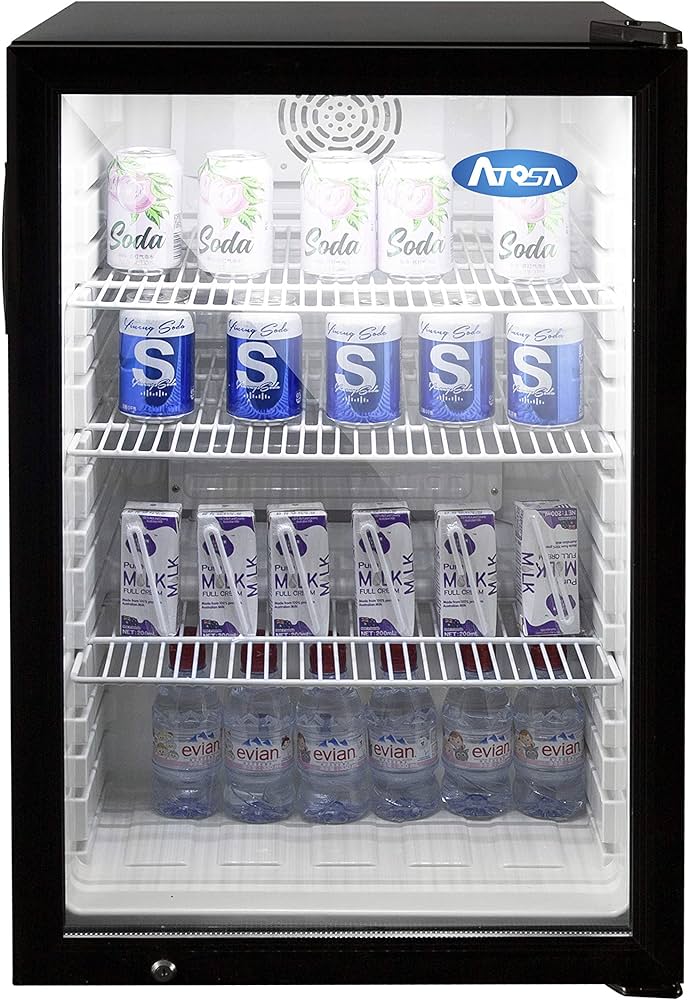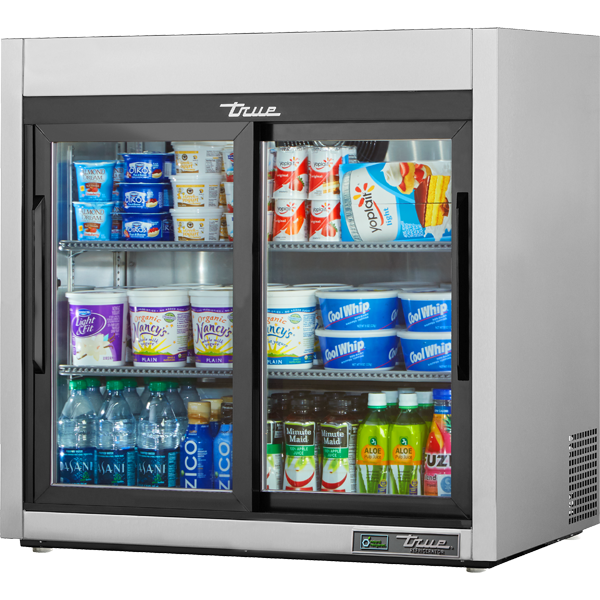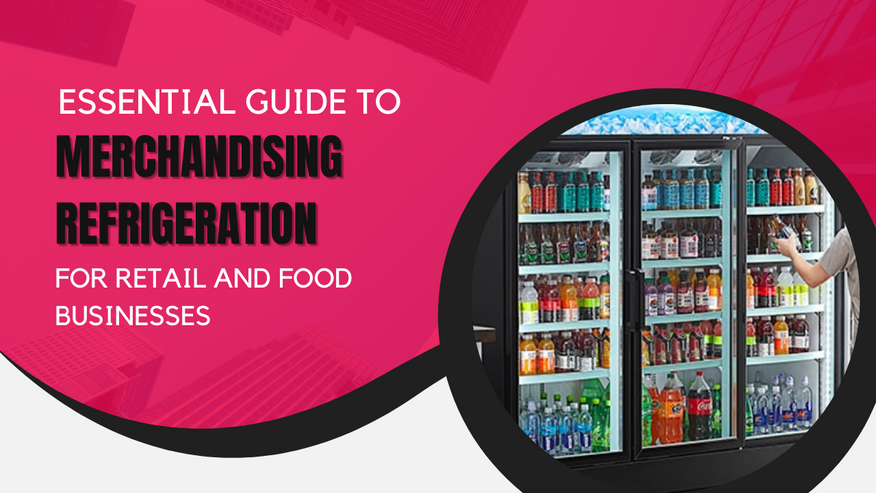Jan 30th 2024 - Team Member
Essential Guide to Merchandising Refrigeration for Retail and Food Businesses
In the world of retail and food businesses, merchandising refrigeration is a cornerstone for product preservation and attractive display. From convenience stores to upscale restaurants, the right refrigeration solution can significantly impact food product integrity and customer experience. This comprehensive guide covers everything from glass door merchandisers to walk-in refrigerators, aiming to assist you in making an informed buying decision for your commercial refrigeration needs.
Types of Refrigerated Display Units
Glass Door Merchandiser

- Visibility and Accessibility: Ideal for displaying chilled products like beverages and pre-packed foods, essential in convenience stores.
- Swinging Doors vs. Sliding Doors: Choose based on your store layout and customer access to food.
Atosa CTD-5
Bar and Undercounter Refrigerators
- Space-Saving Solutions: These perfect commercial bar refrigerators and undercounter models provide extra refrigeration space without occupying significant floor space.
- Versatility: Suitable for storing everything from bottled drinks to fresh flowers.

True TSD-09G-HC-LD
Walk-In Refrigerators and Coolers
- Larger Units for Bulk Storage: Walk-in refrigerators and walk-in coolers are the industry standard for storing large quantities of food and warm food that needs cooling.
- Configurations: Available in various sizes, from compact milk coolers to larger walk-in unit options.
Refrigeration for Specialized Needs
Drop-In Coolers and Milk Coolers
- Easy Integration: Drop-in coolers offer convenient integration into existing counters and food prep areas.
- School and Cafeteria Use: Milk coolers are essential in educational settings, providing easy access and correct temperature maintenance for milk cartons.
Display Merchandiser Options
- Vertical vs. Horizontal Models: Choose based on your store's layout and the type of food products you're displaying.
- Customization: Look for units with adjustable shelves for maximum flexibility in product presentation.
Maintenance and Energy Considerations
Keeping Costs Down
- Energy-Efficient Models: Invest in energy-efficient commercial refrigeration to reduce energy costs.
- Maintenance Tips: Regular cleaning and servicing prevent bacteria growth and ensure efficient operation.
Temperature Management
- Maintaining Correct Ambient Temperatures: Ensure your unit maintains a consistent internal temperature for different types of food, from frozen foods to fresh produce.
- Digital Temperature Controls: Modern units come with digital issue controls for precise and optimal temperature range management.
Choosing the Right Refrigeration Unit
Assessing Your Business Needs
- Storage Capacity: Evaluate the storage capacity needed for your business, considering both current and future needs.
- Types of Refrigerated Merchandisers: Select from standard models, countertop models, or specialty units like air merchandisers.
Features for Enhanced Performance
- Forced-Air Refrigeration: Ideal for keeping contents cool in commercial settings, especially in cooler environments.
- Remote Compressor: Some models offer a remote compressor for quieter operation in a commercial environment.
Additional Considerations
Aesthetic and Functional Aspects
- Straight Glass vs. Curved Glass: Choose based on aesthetic preference and the type of display merchandiser that best fits your space.
- Accessory Features: Some units come with additional features like bottle openers or dish tables.
Buying Guide for Retail and Food Businesses
- Making the Buying Decision: Consider all aspects from energy usage, temperature control, to the quantity and type of food you will store.
- Understanding the Commercial Range: Be aware of the different refrigeration options available, tailored to various commercial settings.
Placement and Installation
- Avoiding Direct Sunlight: Place refrigeration units away from direct sunlight to maintain internal temperatures and prevent overworking the cooling system.
- Accessibility for Staff and Customers: Ensure the unit is placed for easy access, both for stocking and customer use.
Conclusion
Choosing the right merchandising refrigeration unit is a critical aspect of running a successful food retail or food business. By understanding the different types of units, considering energy efficiency, and assessing your specific business needs, you can ensure that you have the appropriate refrigerated storage space to keep your food products in advance at safe temperatures and your items cool.
For more detailed information on commercial refrigeration and other kitchen equipment, visit Culinary Depot.
In summary, investing in the right commercial refrigeration solution is crucial for any food business, from small cafes to large supermarkets. By following this buying guide and considering factors like the type of refrigeration, energy efficiency, and storage capacity, you can ensure optimal functionality and efficiency in your commercial kitchen or retail space.

